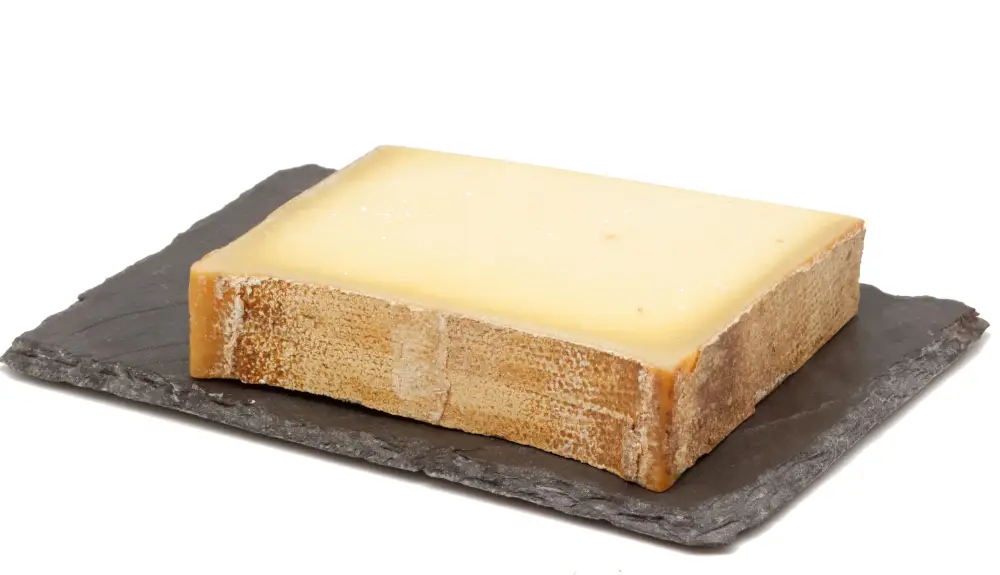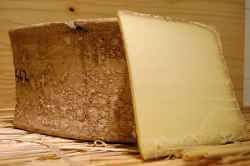Since 1968, the AOC has codified the rules governing milk production up the refining stage. Beaufort cheese area production is confined to the upper mountainous region of the Savoy district: the Beaufortain, Tarentaise and Maurienne Valley and part of the Val d’Arly.
Proud of its history, today Beaufort has 650 milk producers, 45 processing plants, from individual producers to traditional cheese makers, with an annual production of 4 300 tonnes.
In keeping with seasons, our Tarine and Abondance cows, being both agile and hardy, move from the valley bottom to pastures at altitudes as high as 2 500 meters to find the best grass.
Over the centuries, our herdsmen, cheese makers and cellarmen have safeguarded their expertise to bring you the finest quality products.
Untreated whole milk is put into production straight after is collected. Coagulation, cutting the curds, stirring, heating, moulding and pressing in 24 hour, a 40 kg mould with a concave shoulder is obtained from 400 liters of milk.
The making of Beaufort cheese
After a minimum of 5 months maturing in cool cellars, careful treatment produces a crust with a beautiful orange color, and a cheese of incomparable texture and taste.
Each link in the chain is careful monitored : from the milk producer (samples are taken before payment is made for quality milk) to the processing and maturing plant (where production is monitored) and the final product (blind tastings).
Cheese tasting
Cut into cubes as an aperitif, added to a salad, cooked in your favorite recipes or eaten out the doors. Also, it’s commonly used to make fondue with a savoy wine because it melts easily (cf: the recipe of the traditional Savoyard fondue).
Beaufort can be eaten anywhere, anytime and is loved by everyone, from small children to adults.
Originally posted 2013-05-08 22:34:34.




